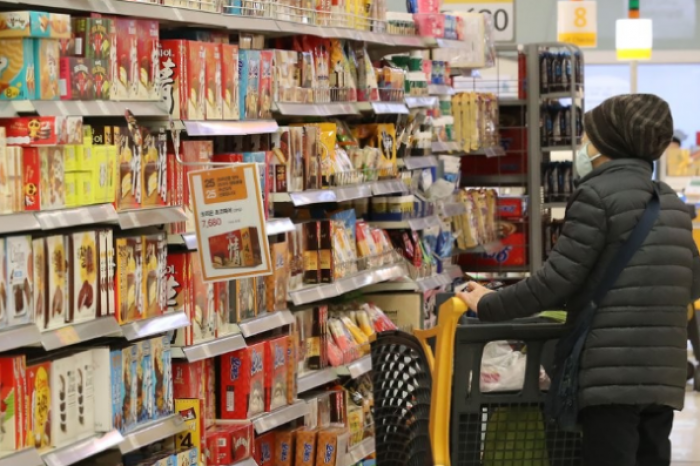S.Korea's Engel coefficient rises sharply amid COVID-19 pandemic
The country's food price inflation rate averaged 5.2% annually in 2020-2021, more than triple the average of five major economies
By Feb 17, 2023 (Gmt+09:00)
LG Chem to sell water filter business to Glenwood PE for $692 million


Kyobo Life poised to buy Japan’s SBI Group-owned savings bank


KT&G eyes overseas M&A after rejecting activist fund's offer


StockX in merger talks with Naver’s online reseller Kream


Mirae Asset to be named Korea Post’s core real estate fund operator



South Korea’s low-income households are feeling the pinch of rising food prices amid the COVID-19 pandemic, according to a report by a local think tank.
That was a bigger increase than the average of five major economies—the US, Germany, Japan, Britain and France—which saw their Engel coefficients rise by 0.9 percentage point to 8.6% over the same period. The Engel coefficients of the US, Germany, Japan, UK and France rose by 0.4, 1.0, 0.9, 1.2, and 0.8 percentage points, respectively, during the same period.
The coefficient is often used as an indicator of living standards and poverty levels, as poorer households tend to spend more of their income on food than richer ones.
The report attributed Korea’s high Engel coefficient to soaring food prices, which were driven by supply disruptions and increased demand due to the pandemic. According to data from the Food and Agriculture Organization, Korea’s food consumer price inflation rate averaged 5.2% annually in 2020-2021, more than triple the average of 1.7% for the five major economies.
The report said Korea’s low food security level made it vulnerable to global supply chain shocks such as COVID-19. The country relies on imports for most of its major agricultural products. Its grain self-sufficiency rate was 19.4% last year, the lowest among the five countries.
Write to Jae-Fu Kim at hu@hankyung.com
-
 EconomyKorea’s inflation picks up 5.2% in January on high utility prices
EconomyKorea’s inflation picks up 5.2% in January on high utility pricesFeb 02, 2023 (Gmt+09:00)
3 Min read -
 RetailS.Korea resumes egg imports in 13 months due to soaring prices
RetailS.Korea resumes egg imports in 13 months due to soaring pricesJan 11, 2023 (Gmt+09:00)
1 Min read -
 Central bankBOK takes another big step hike as weak won lifts prices
Central bankBOK takes another big step hike as weak won lifts pricesOct 12, 2022 (Gmt+09:00)
3 Min read


